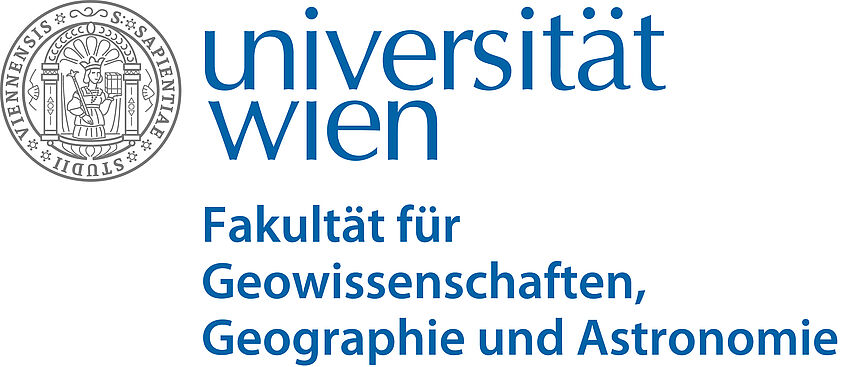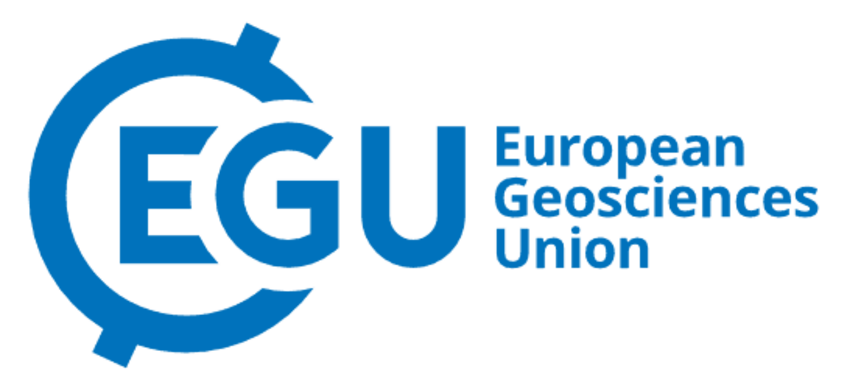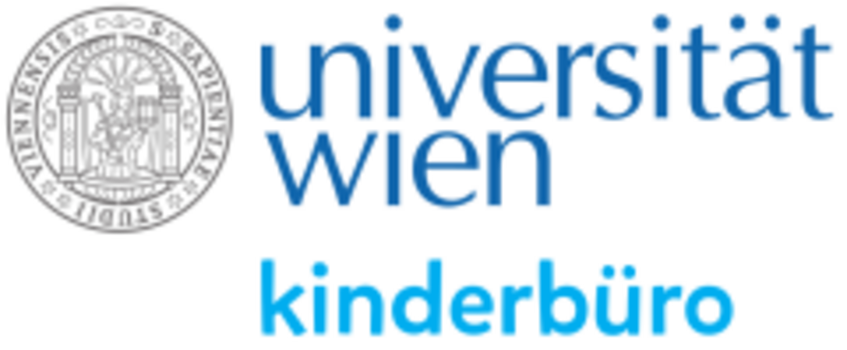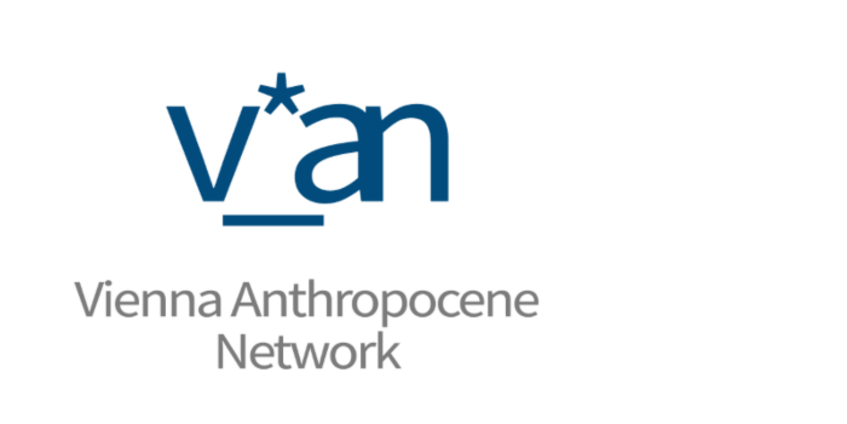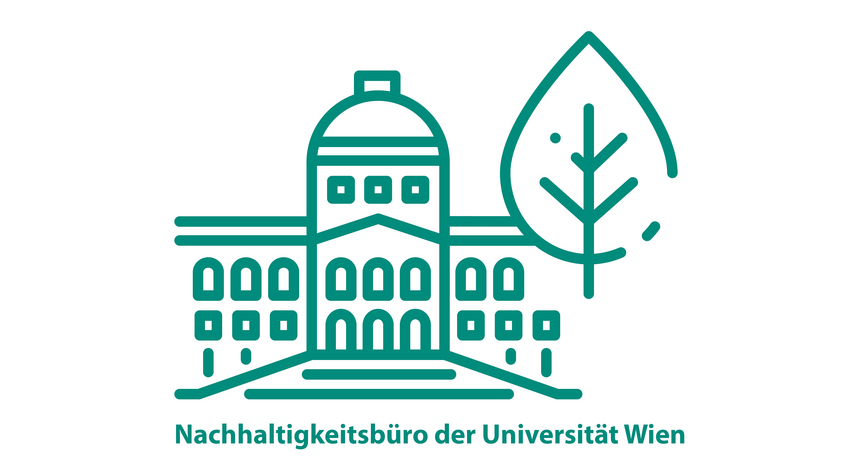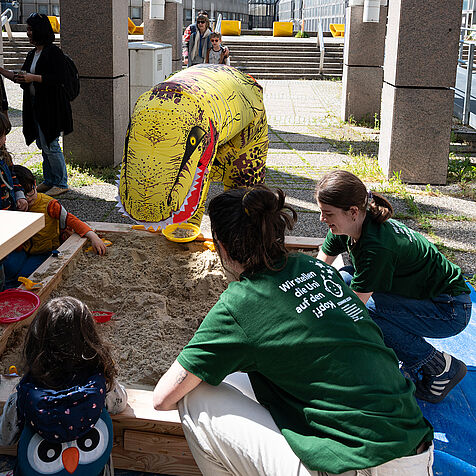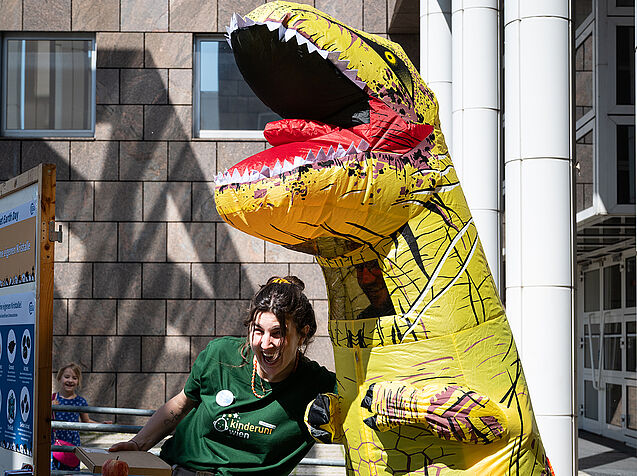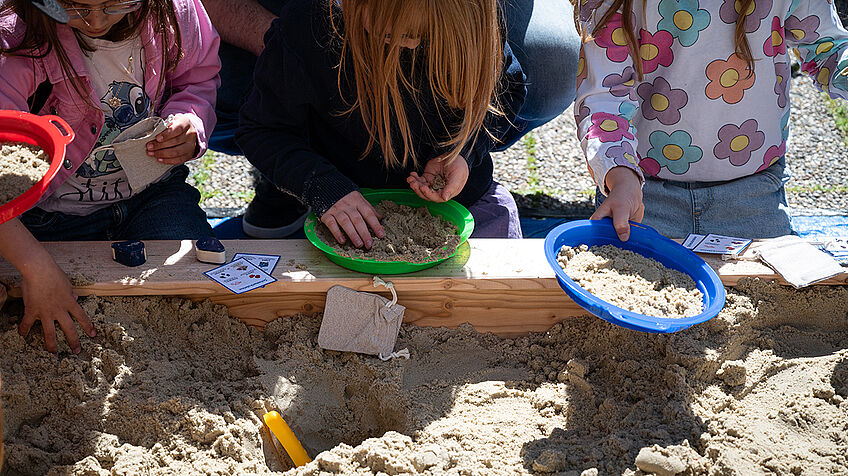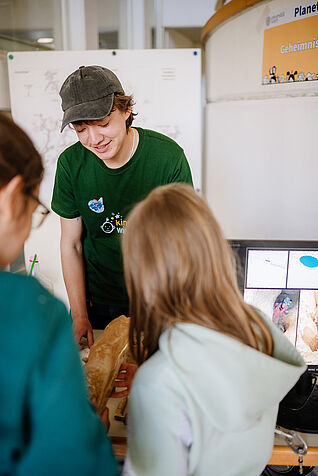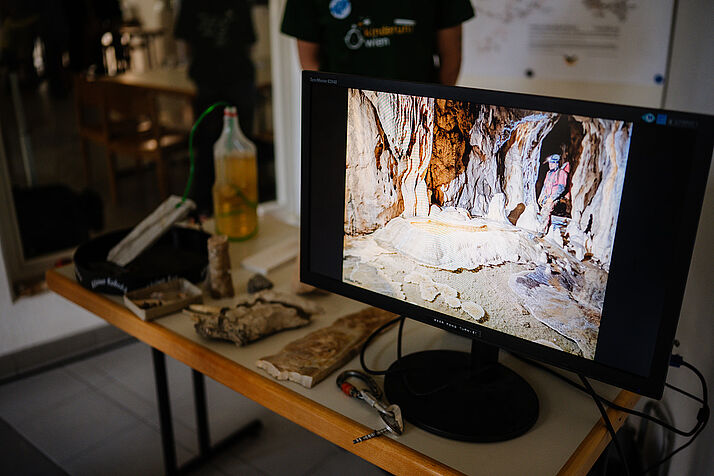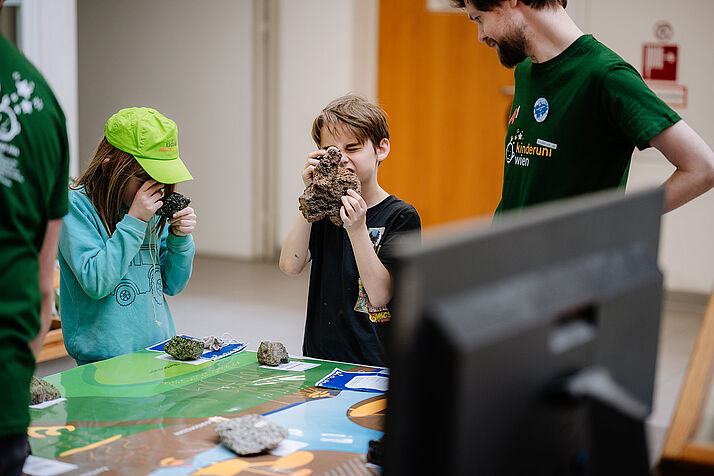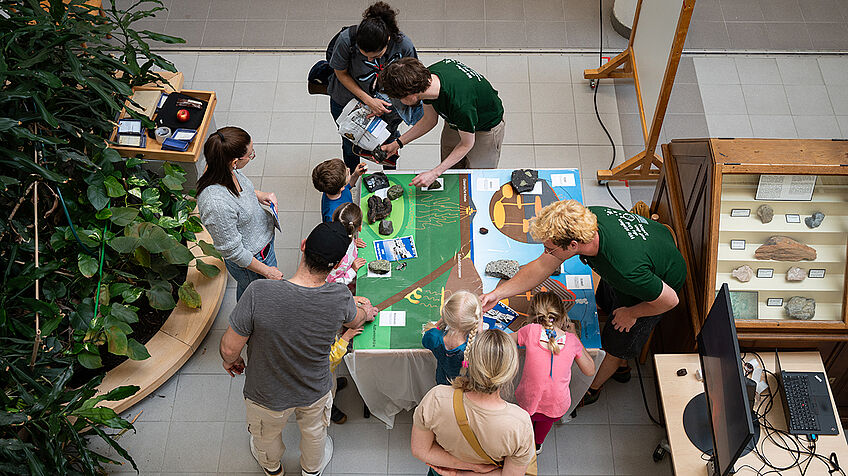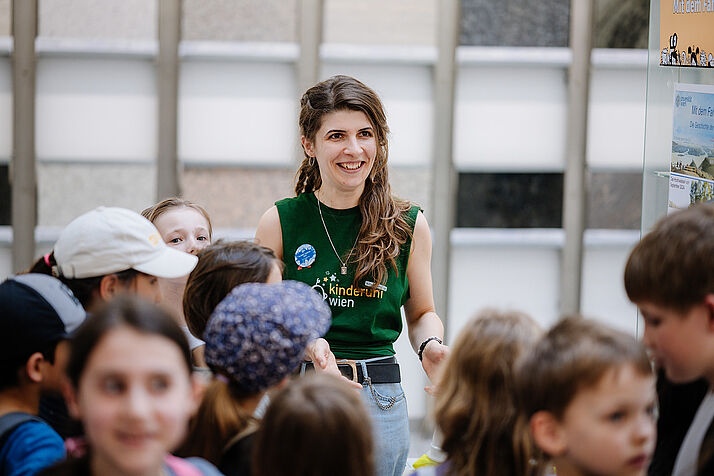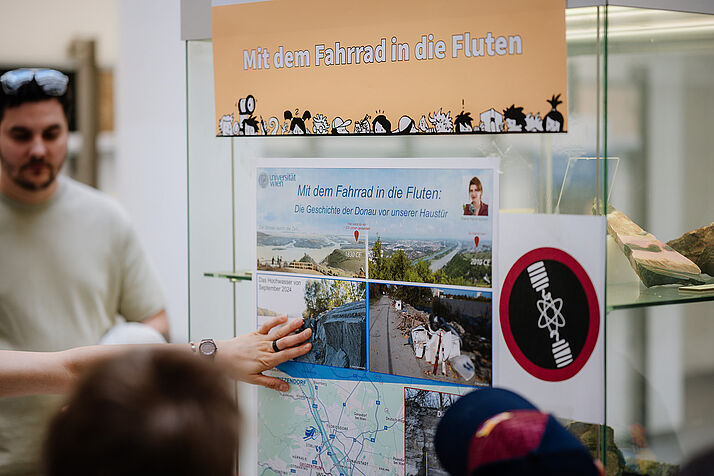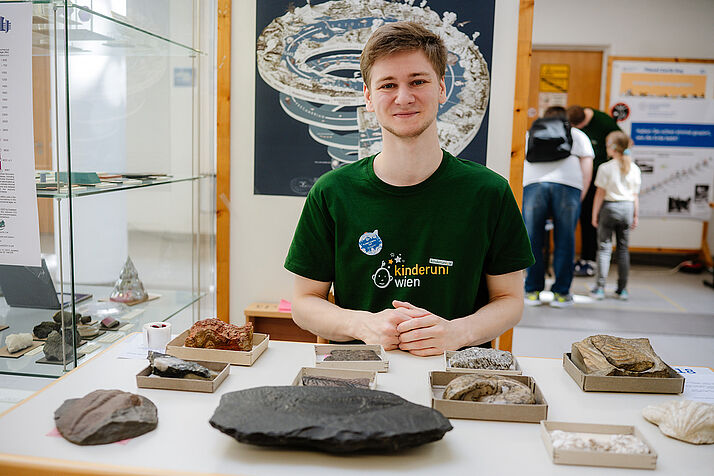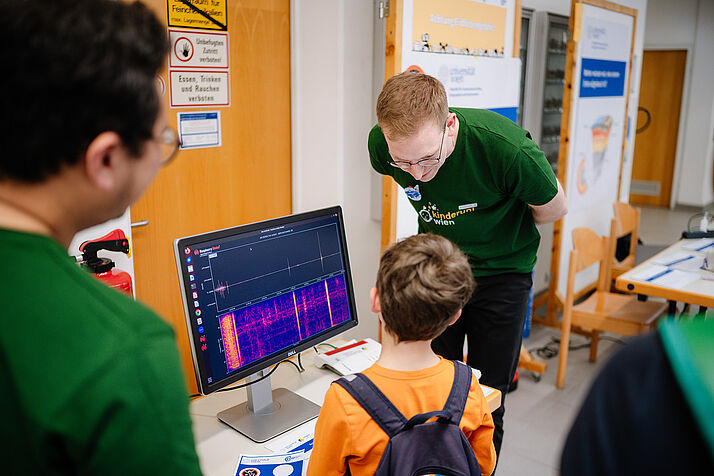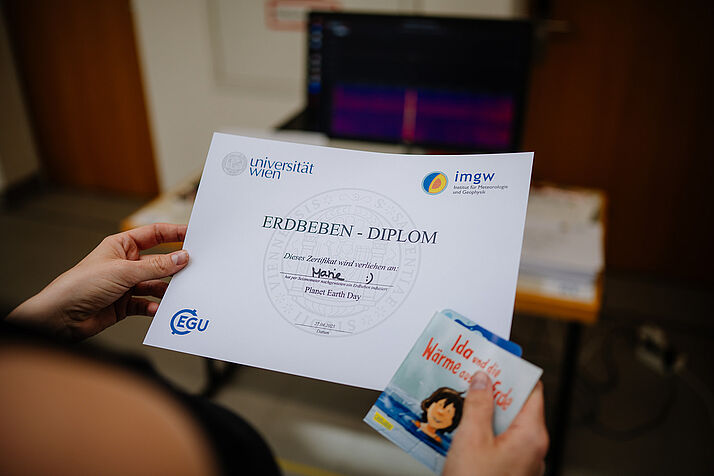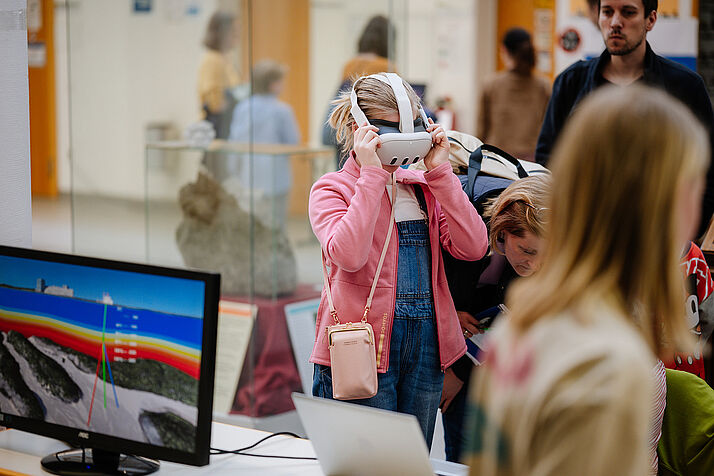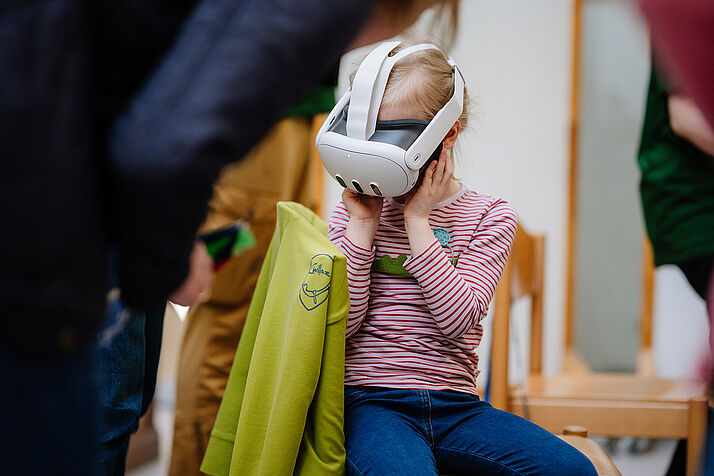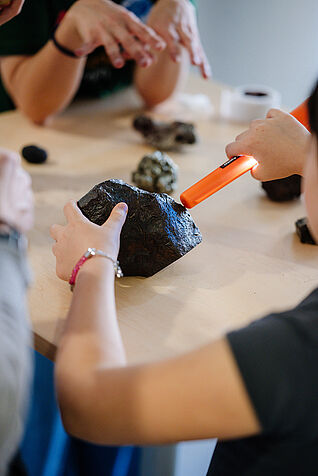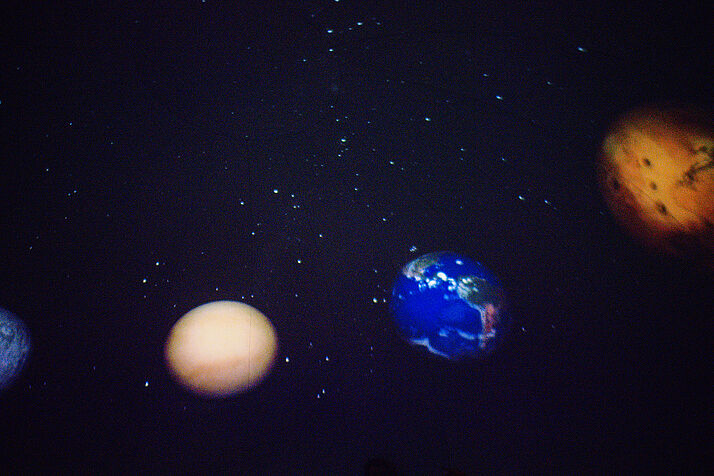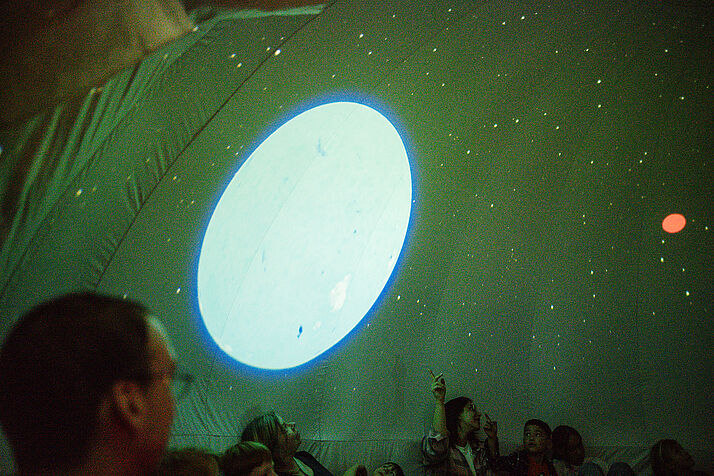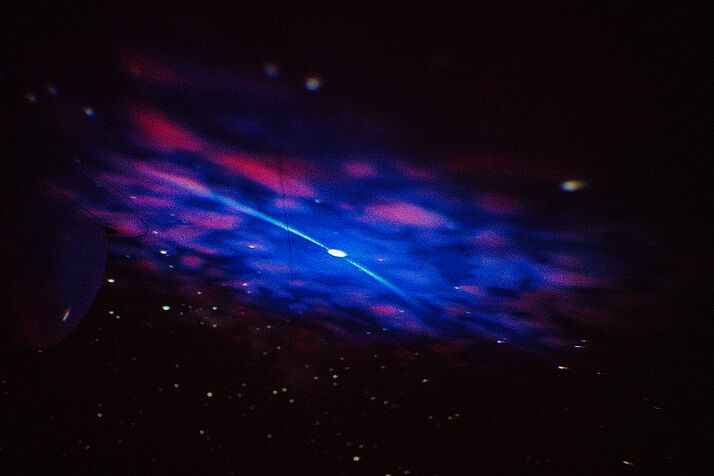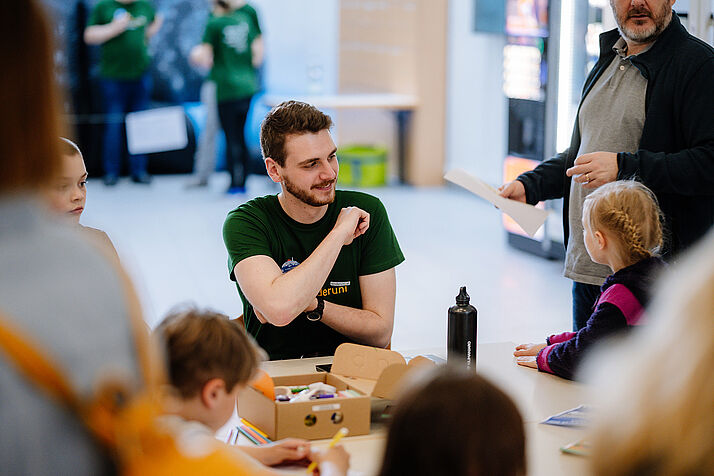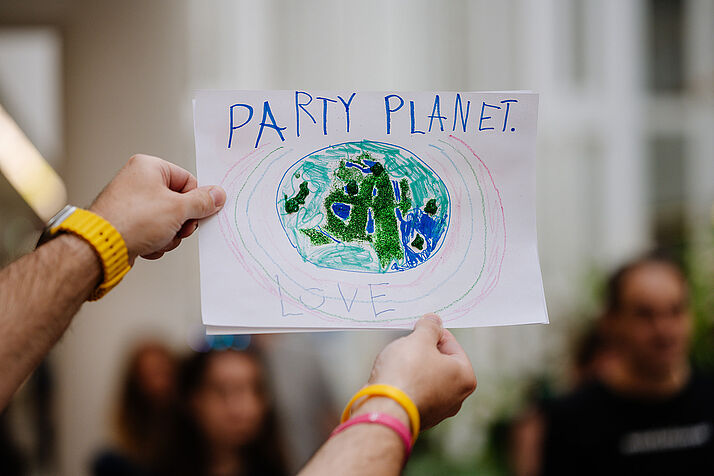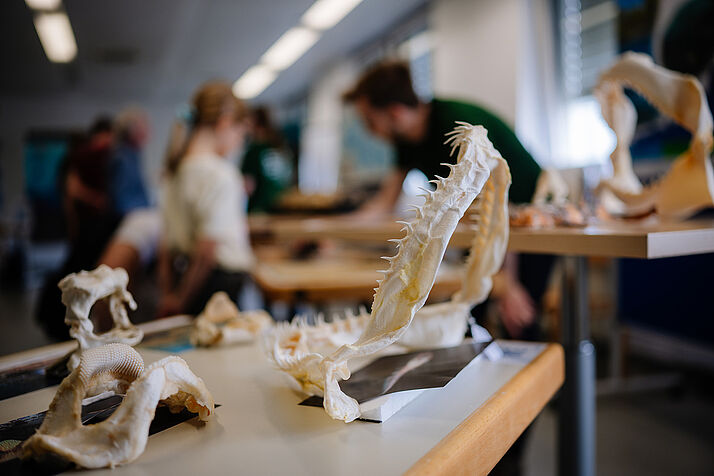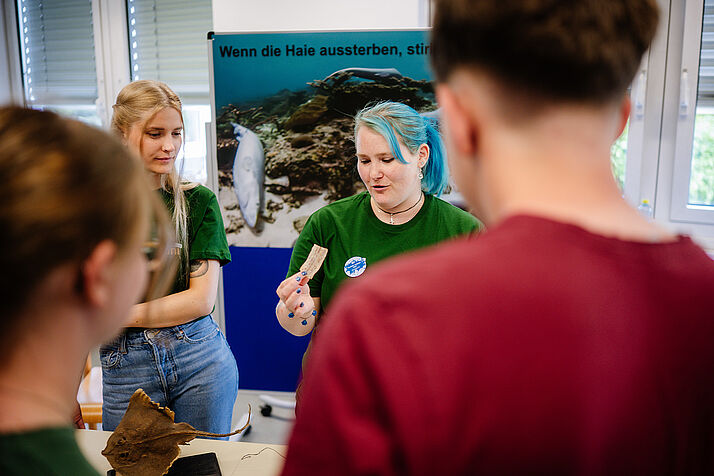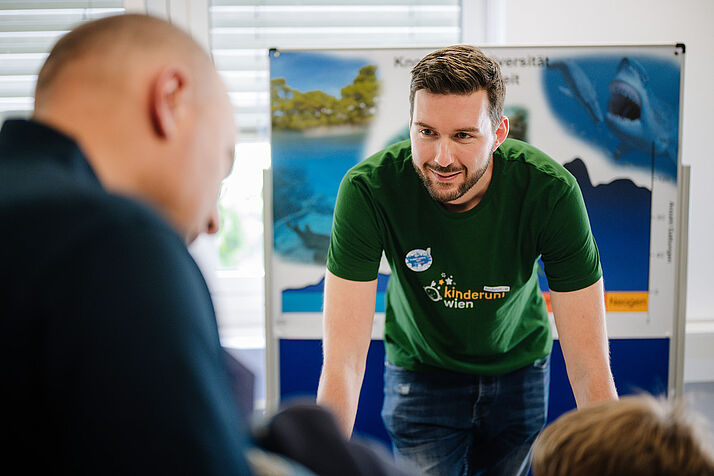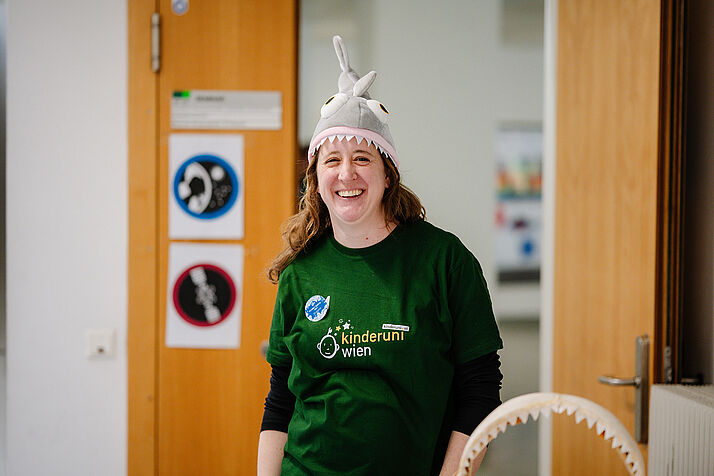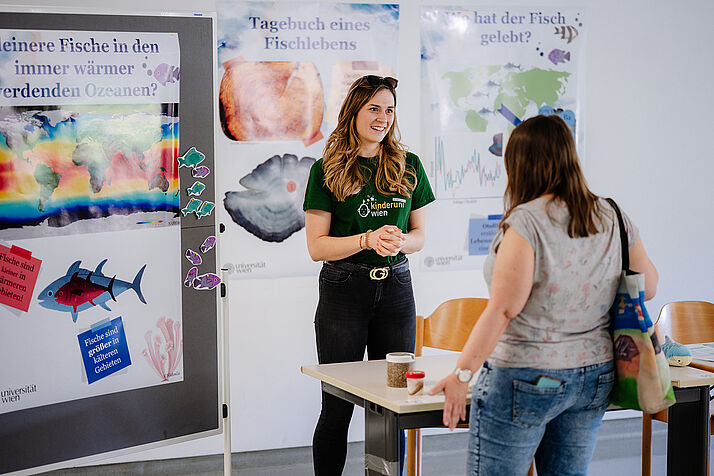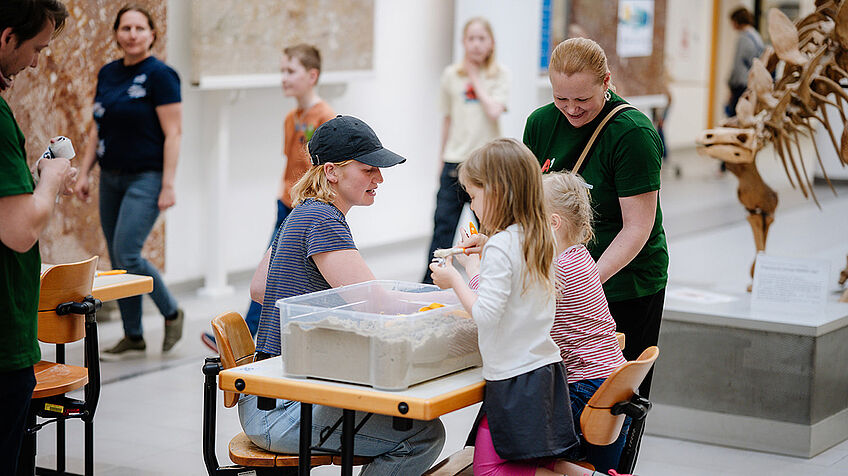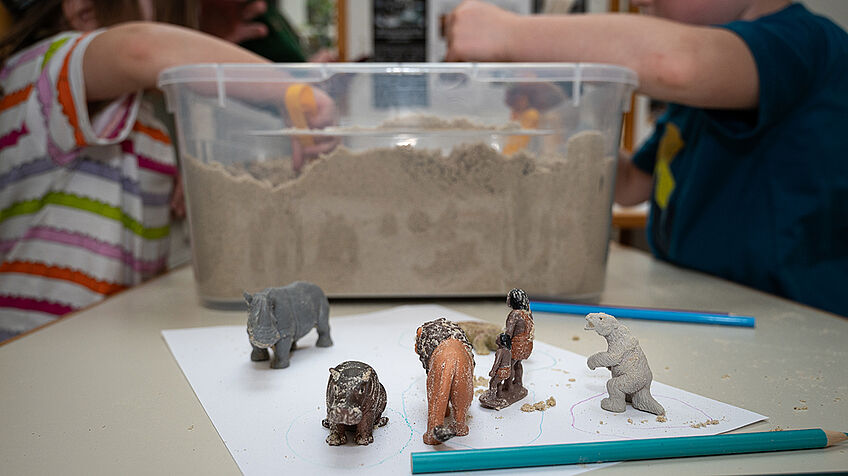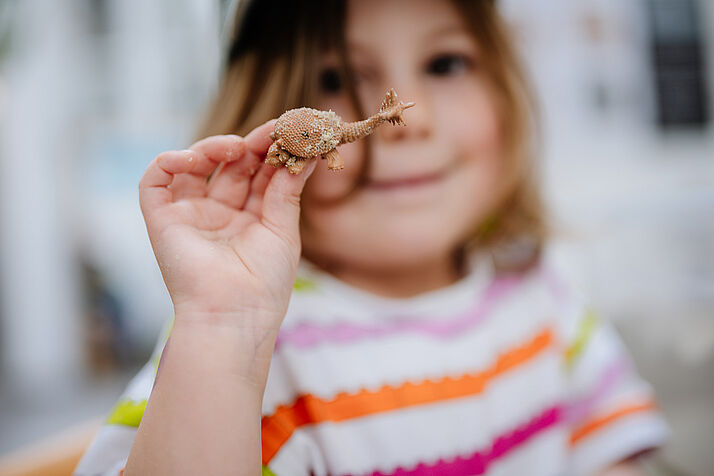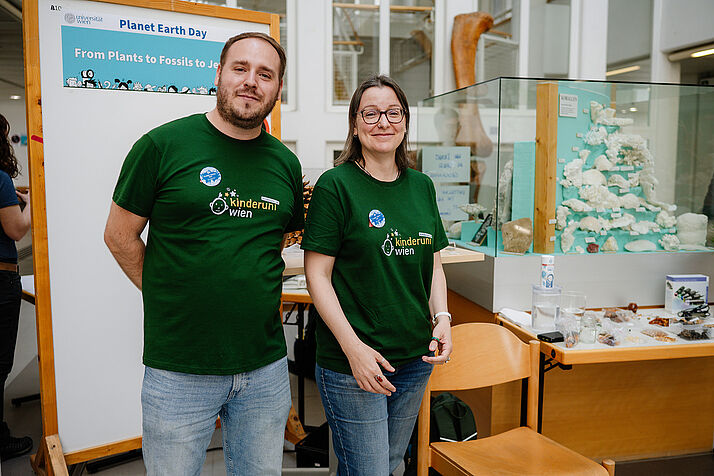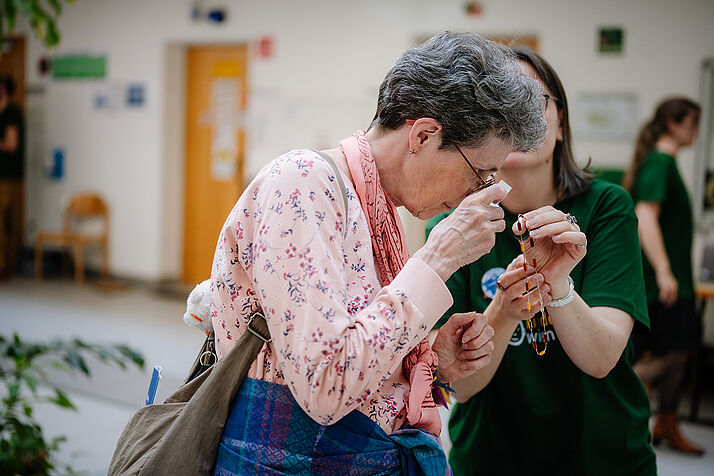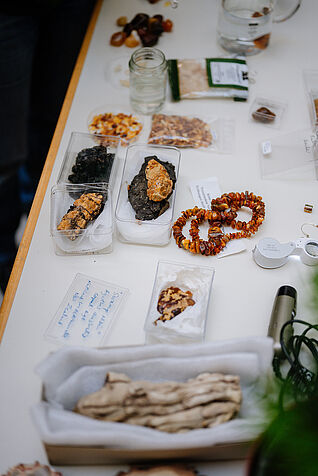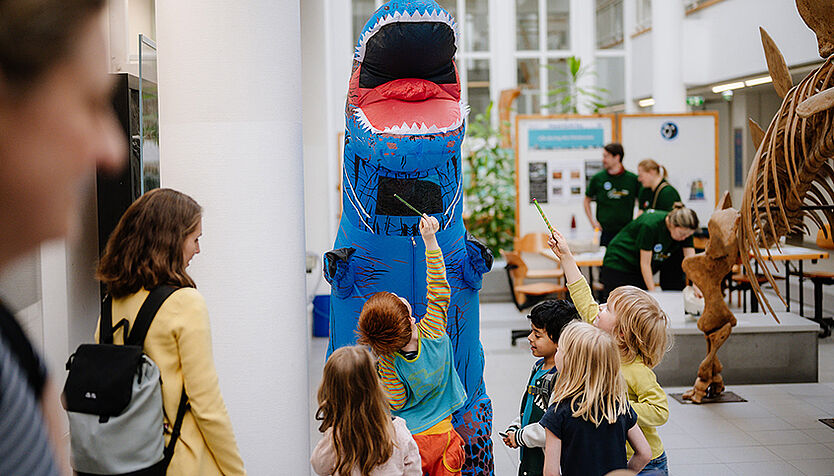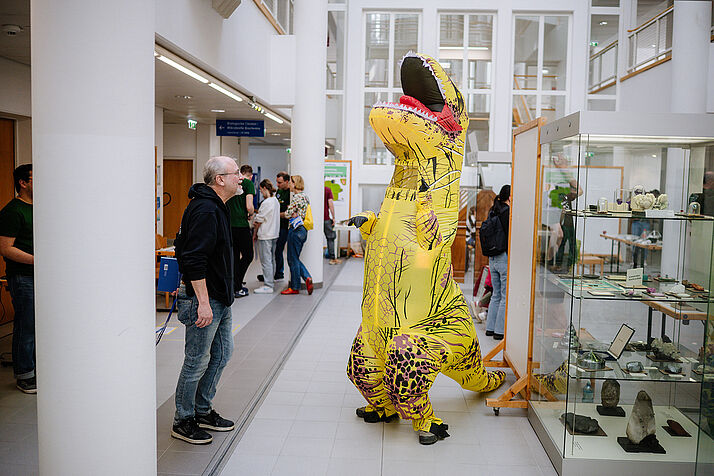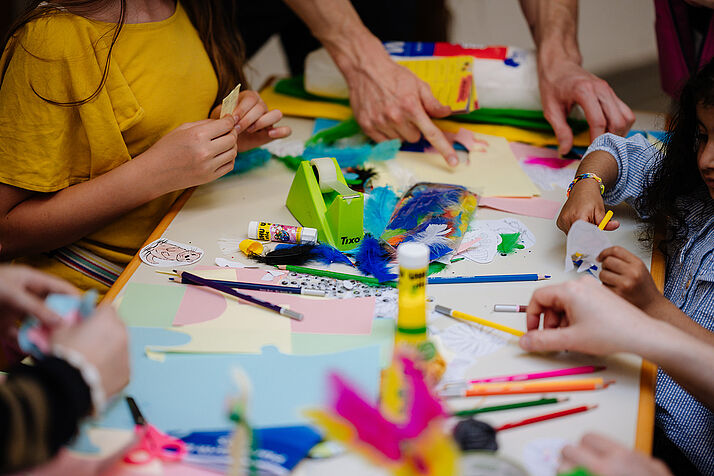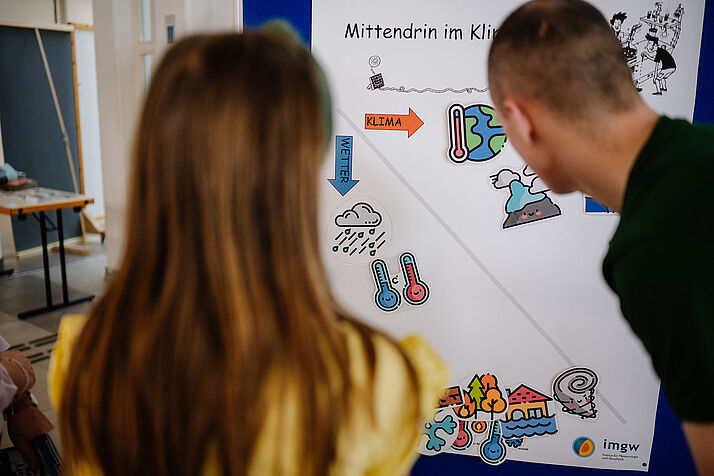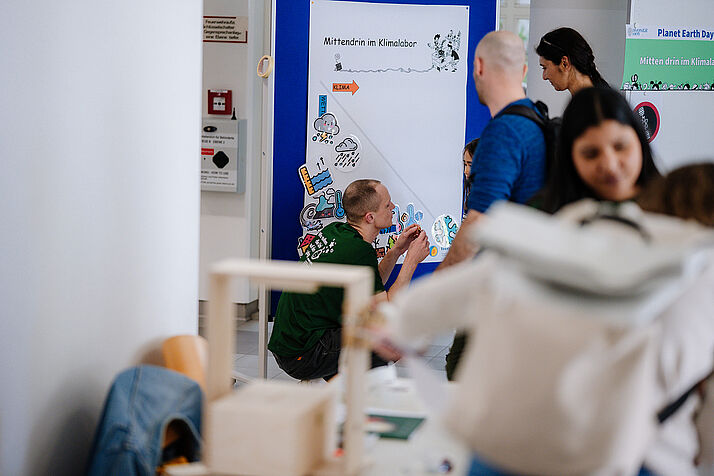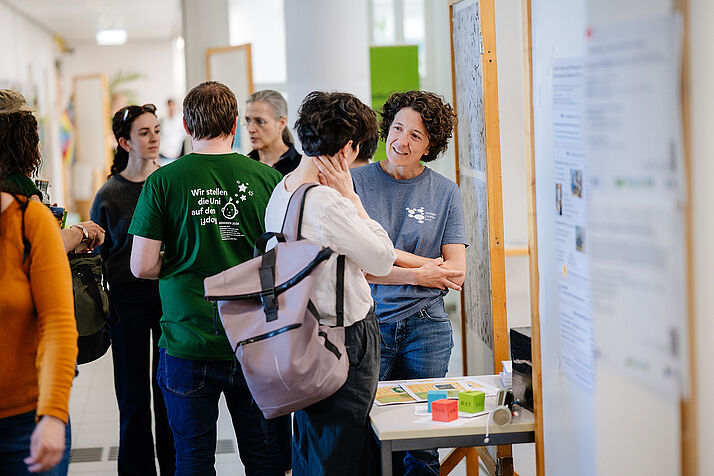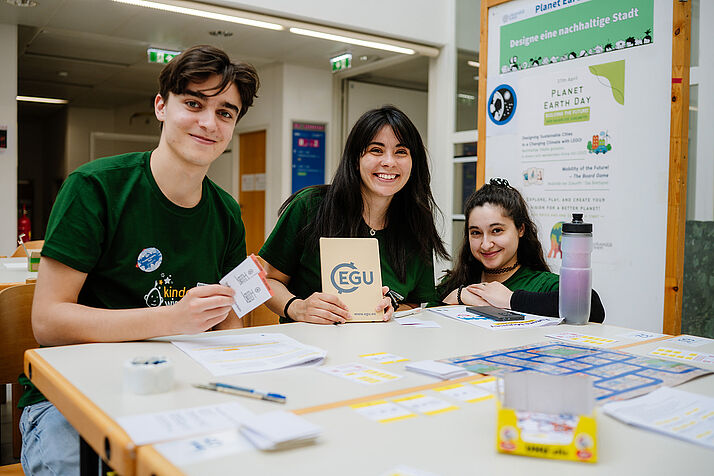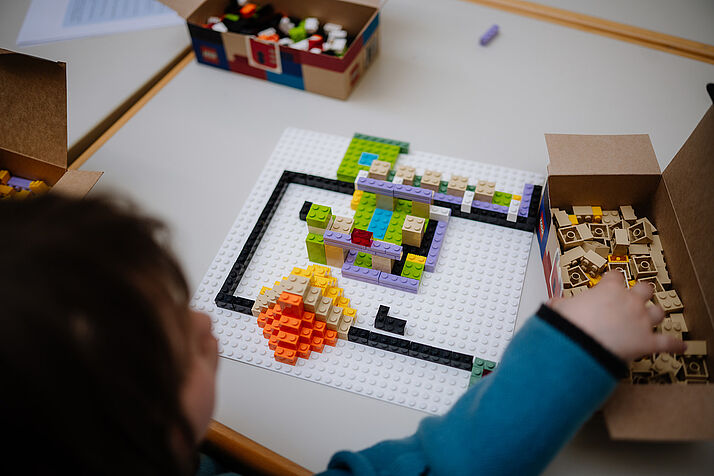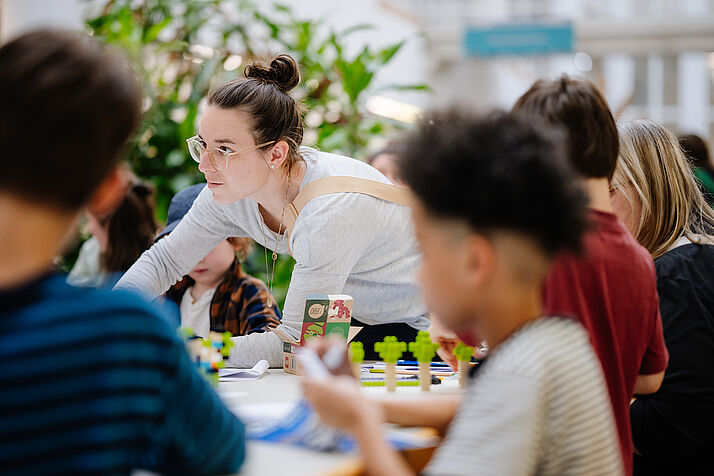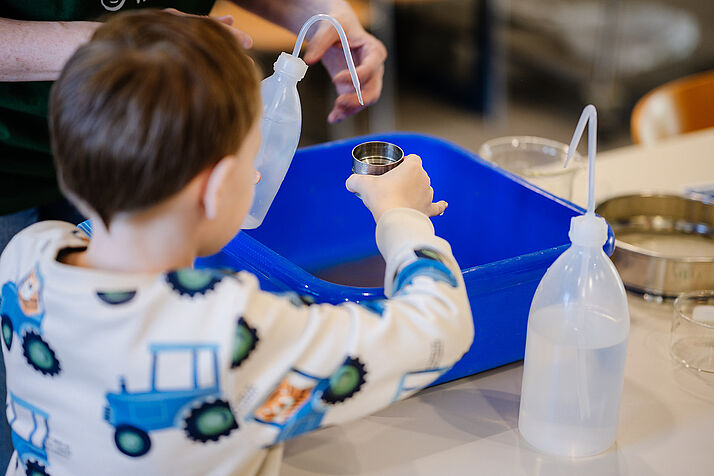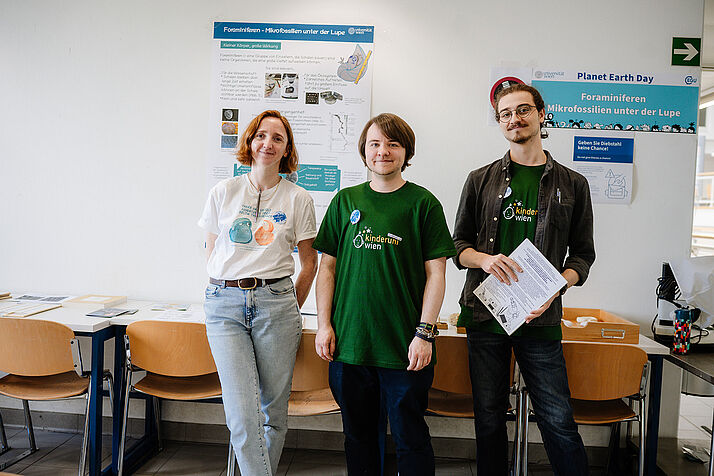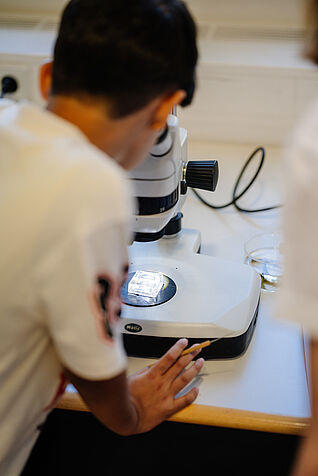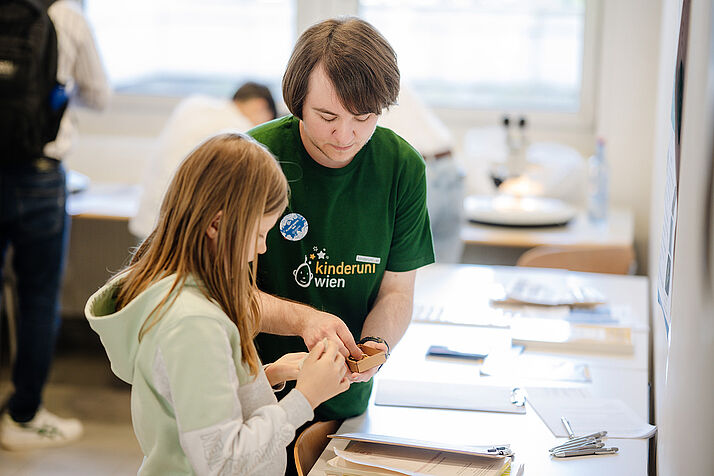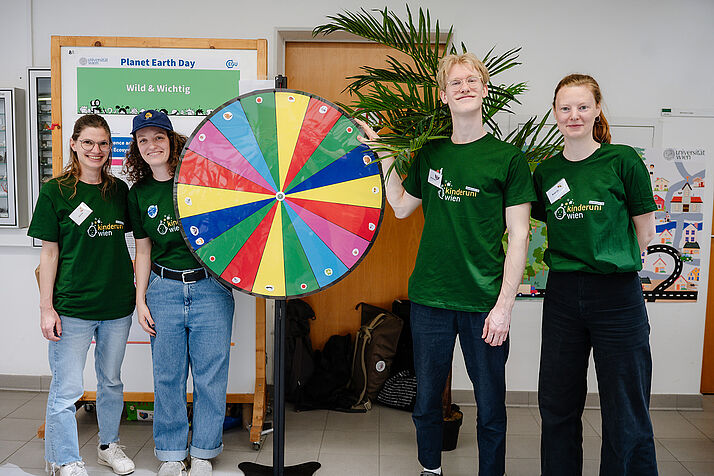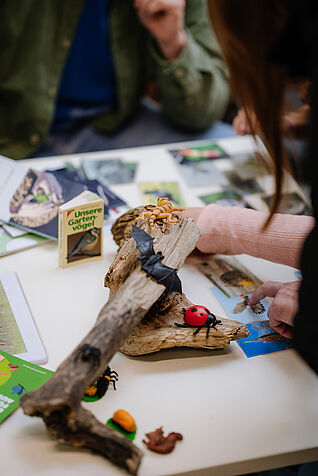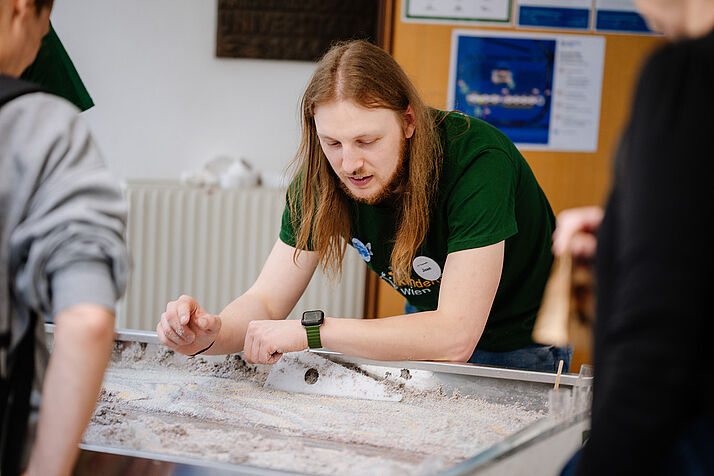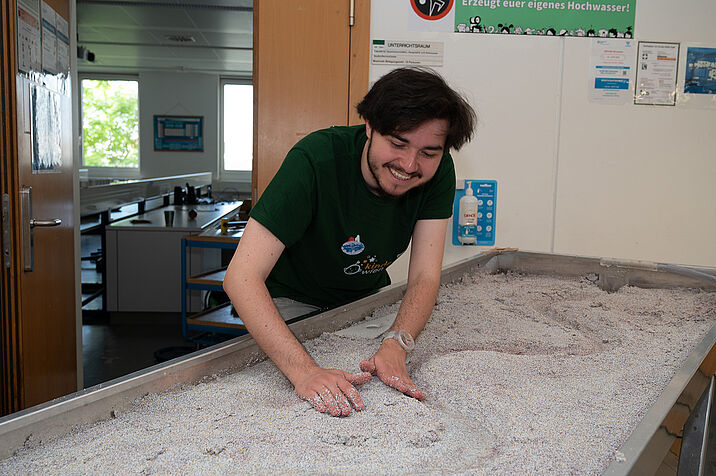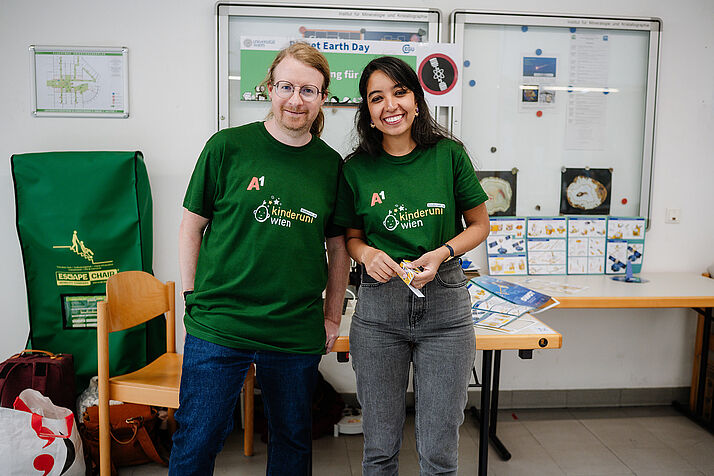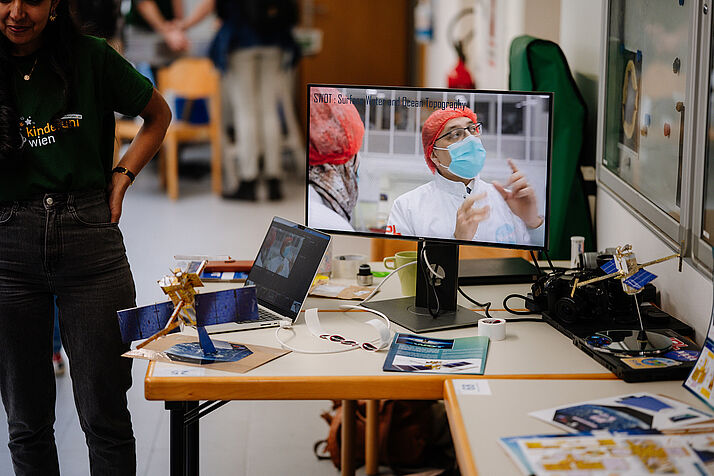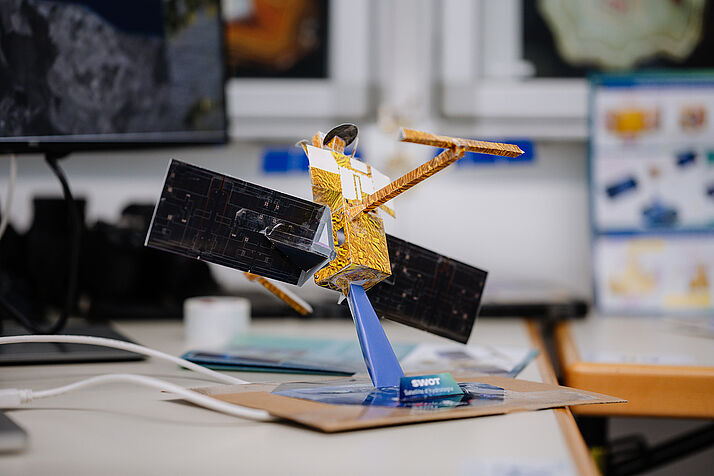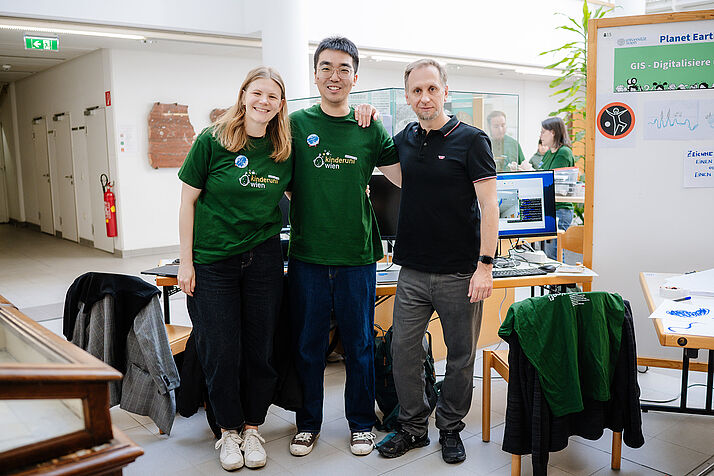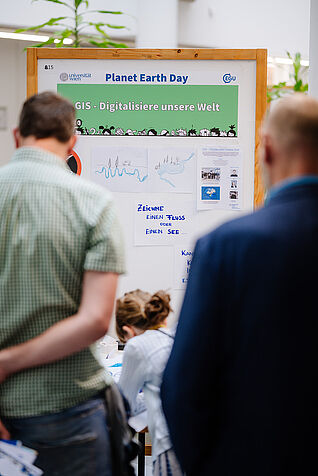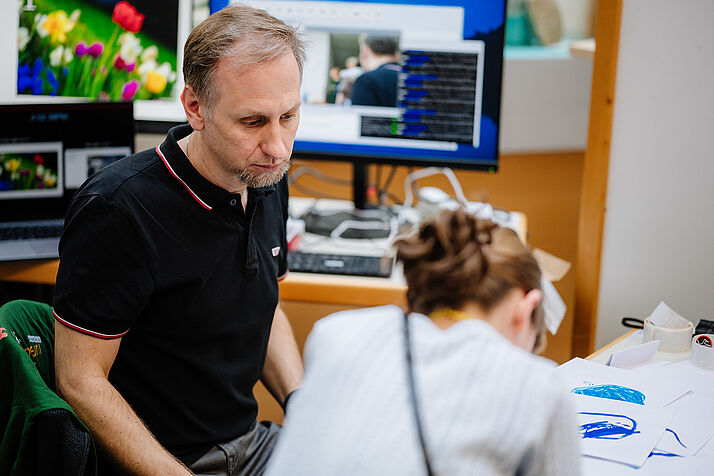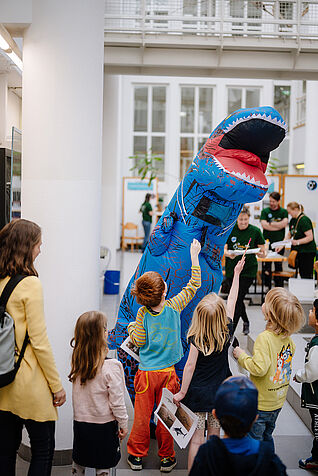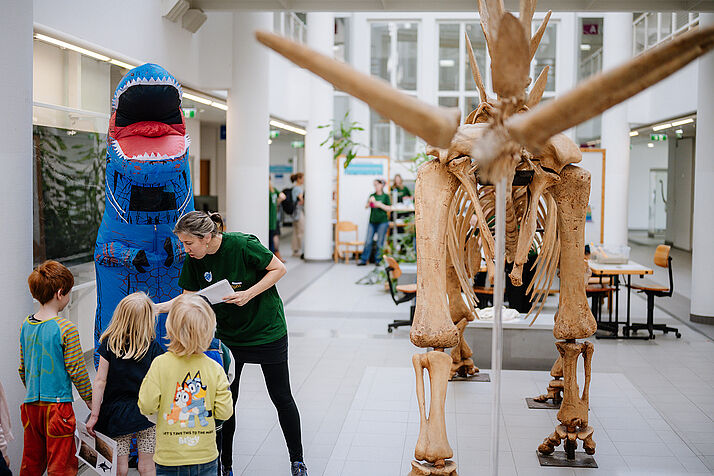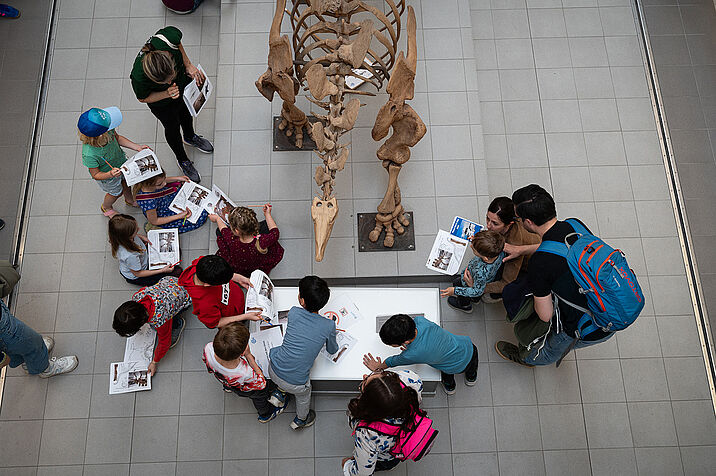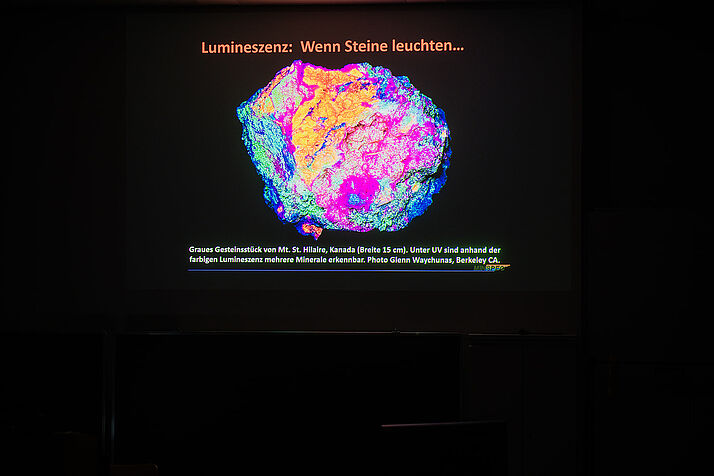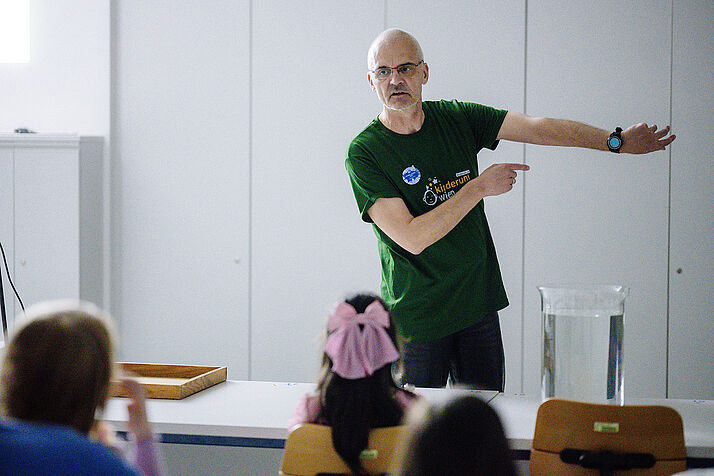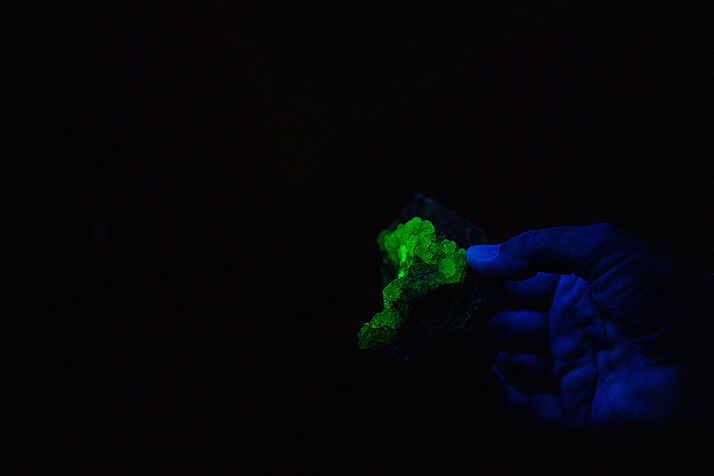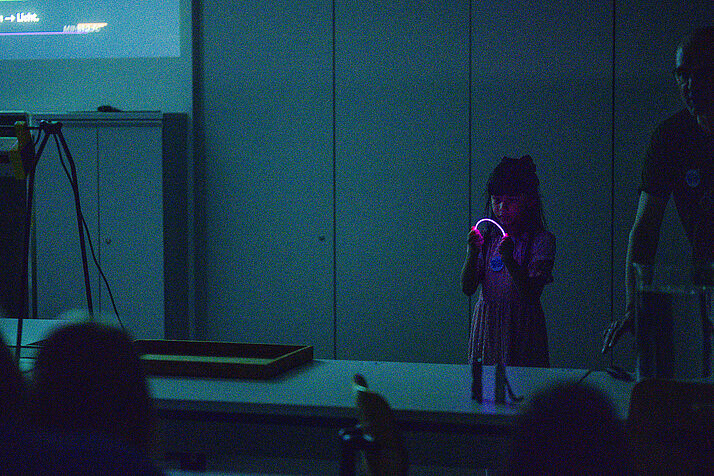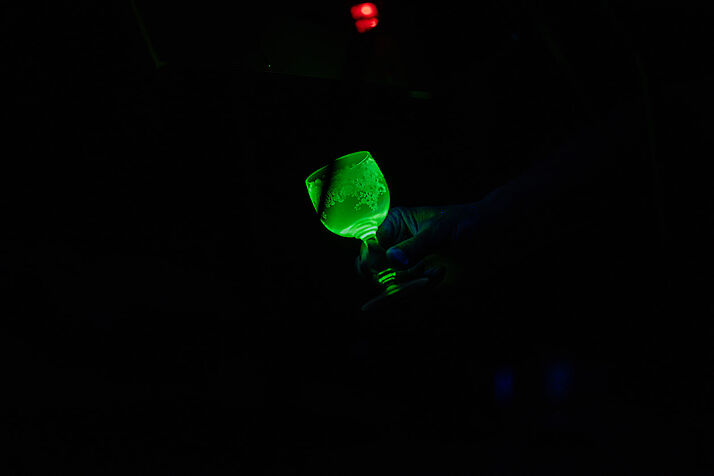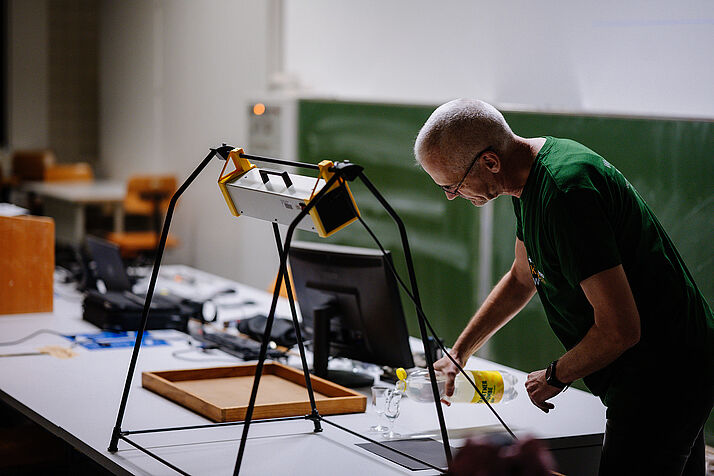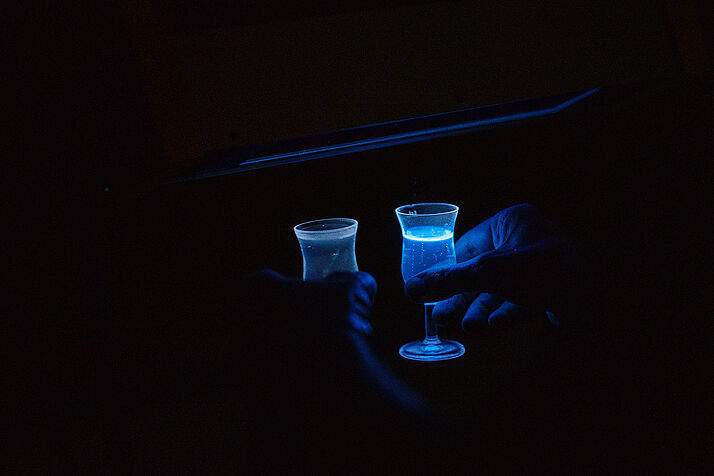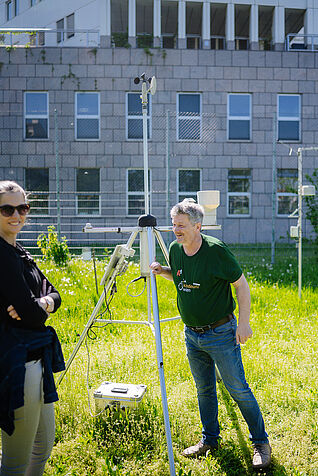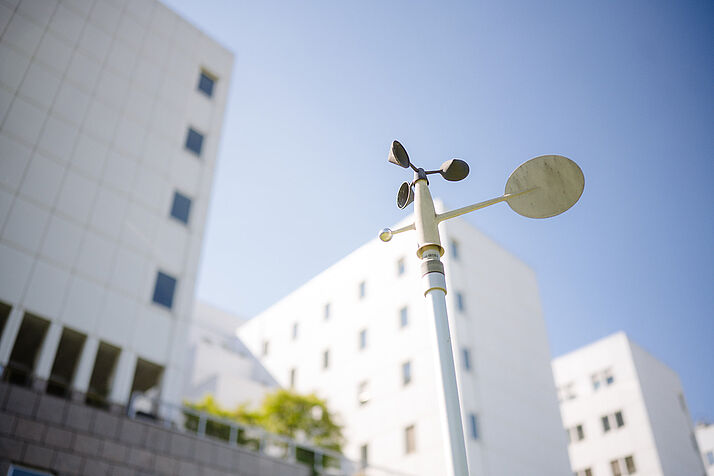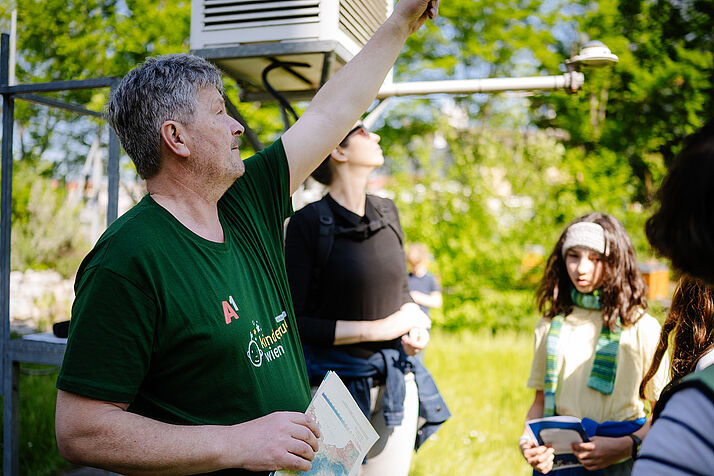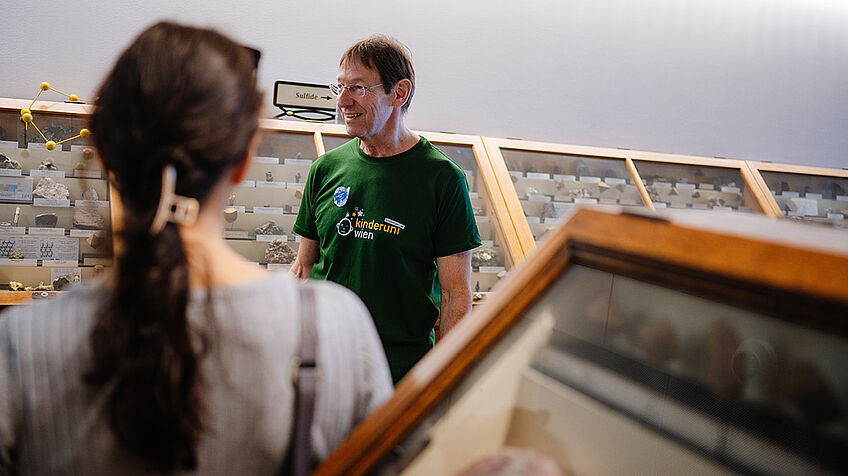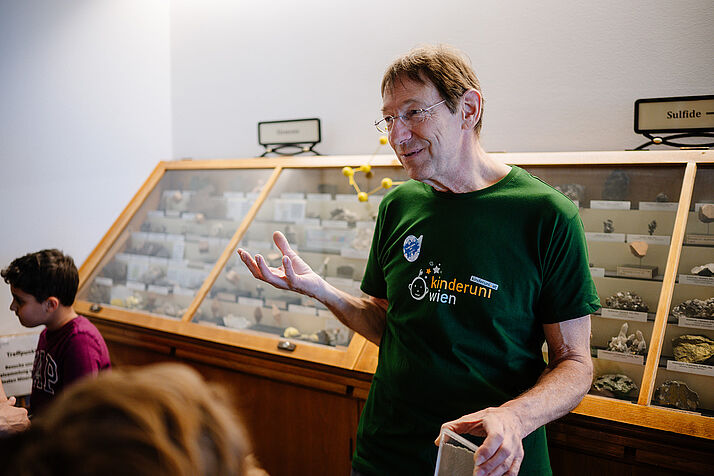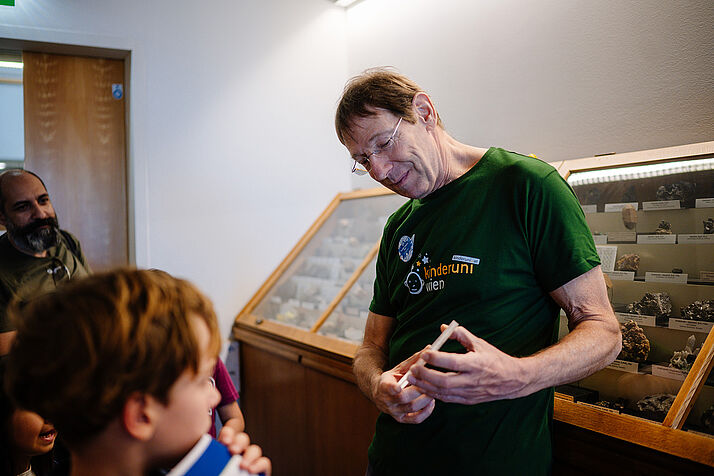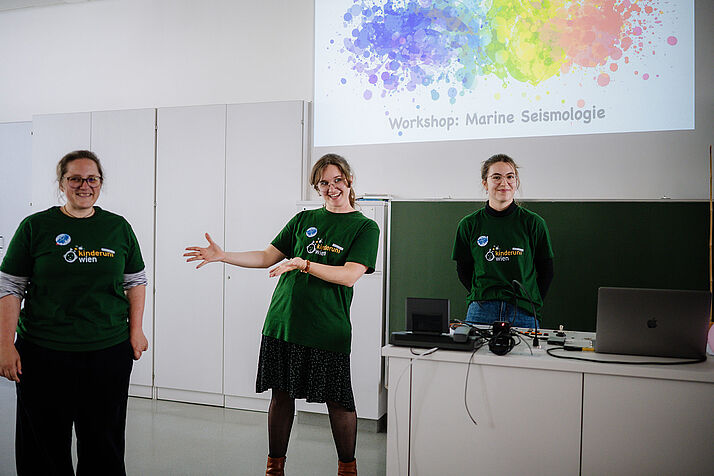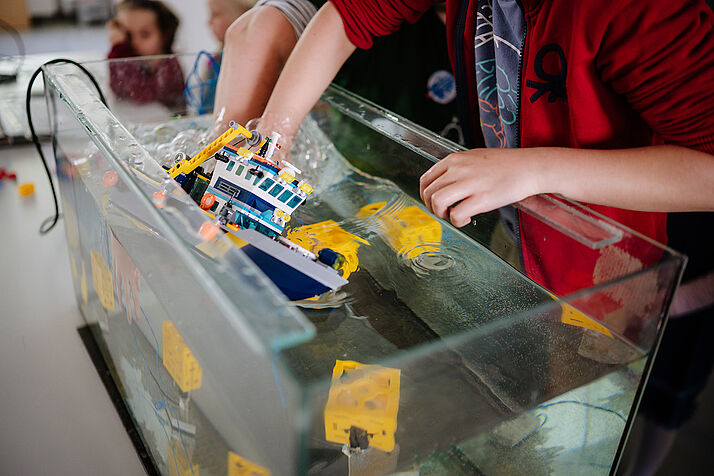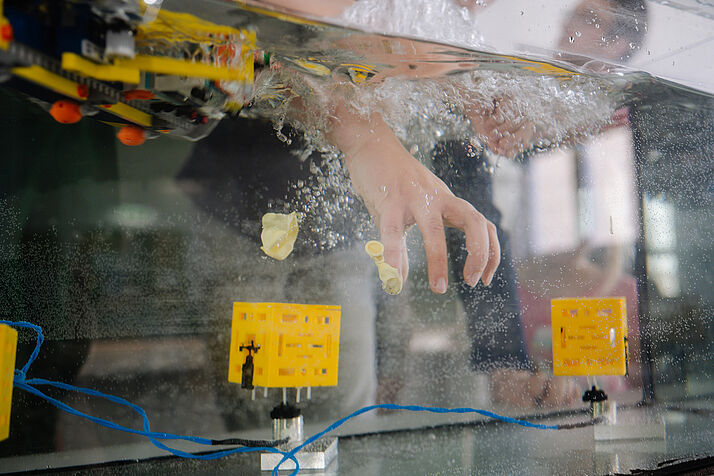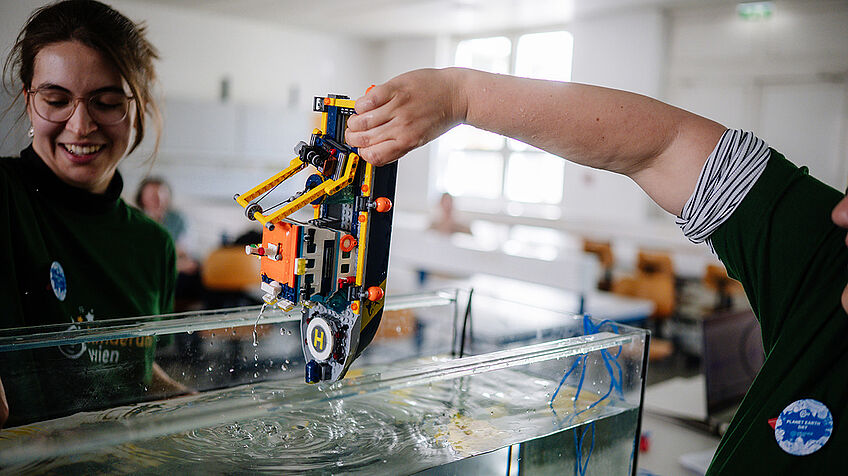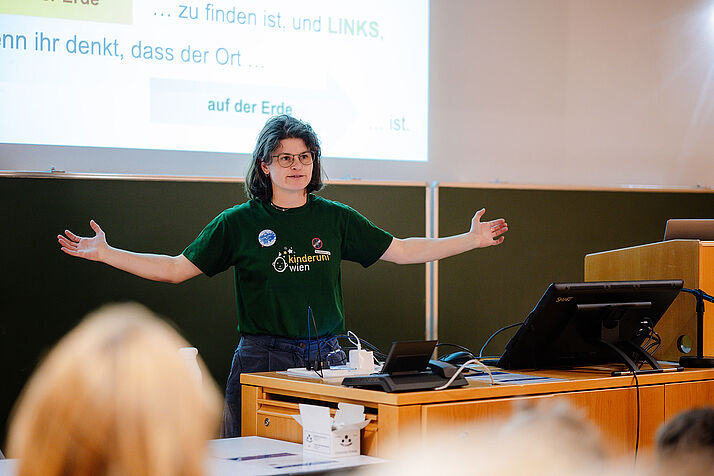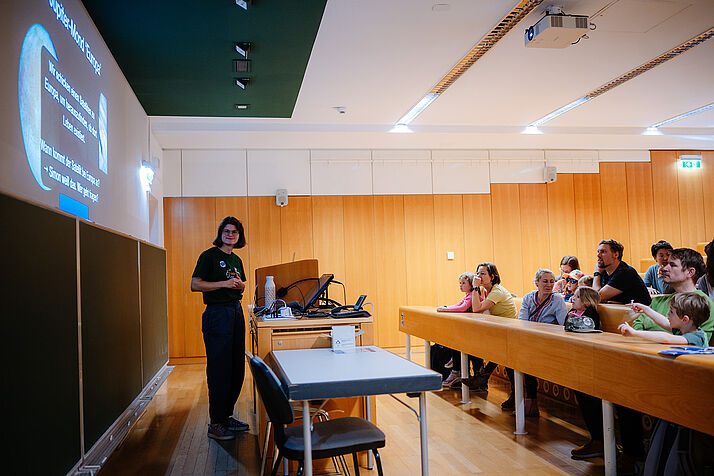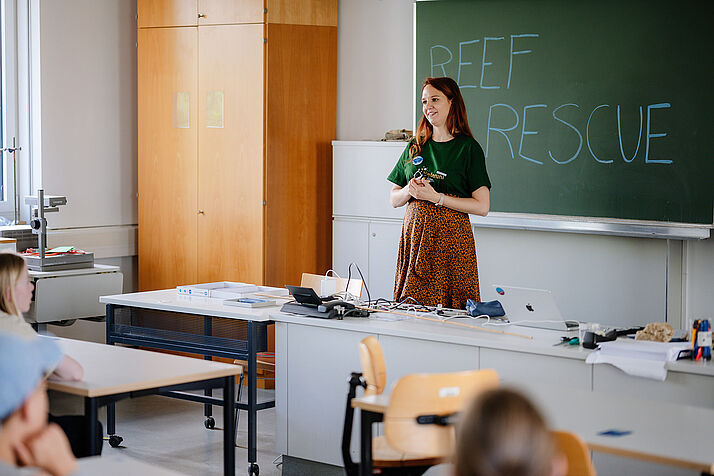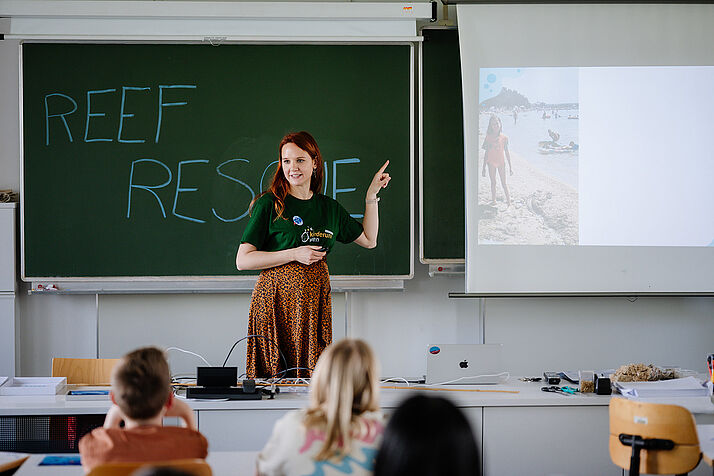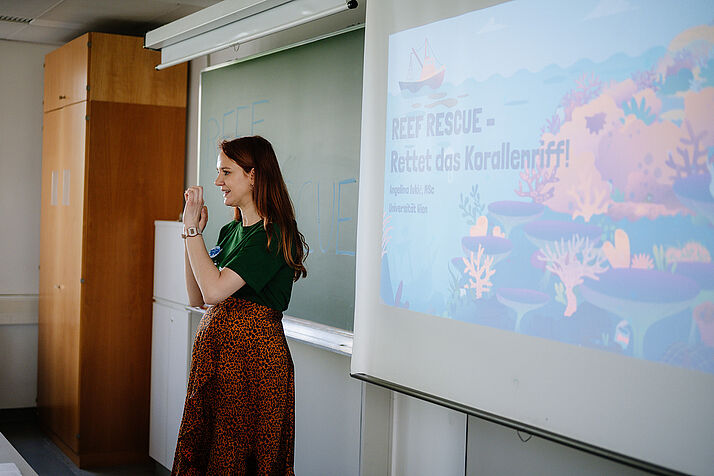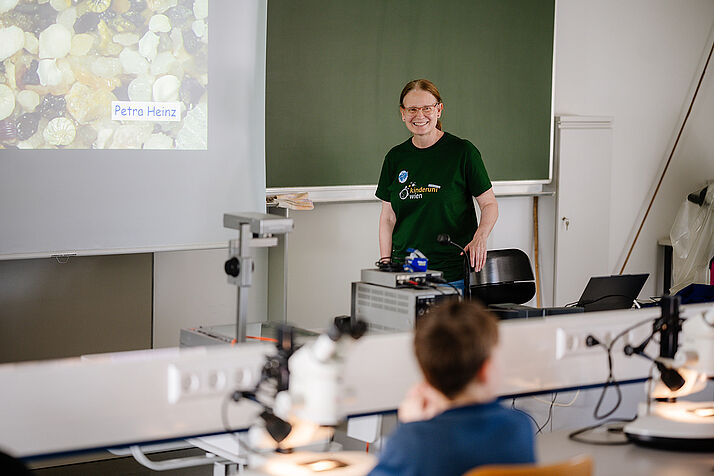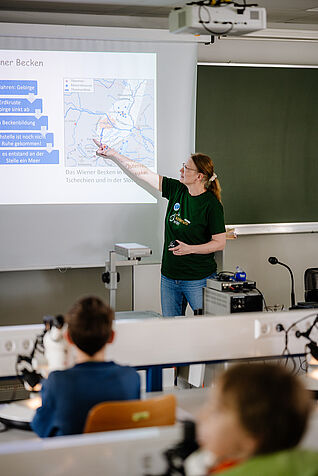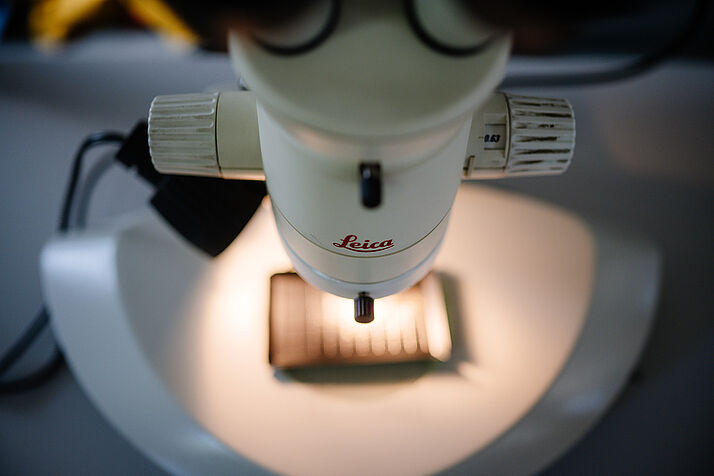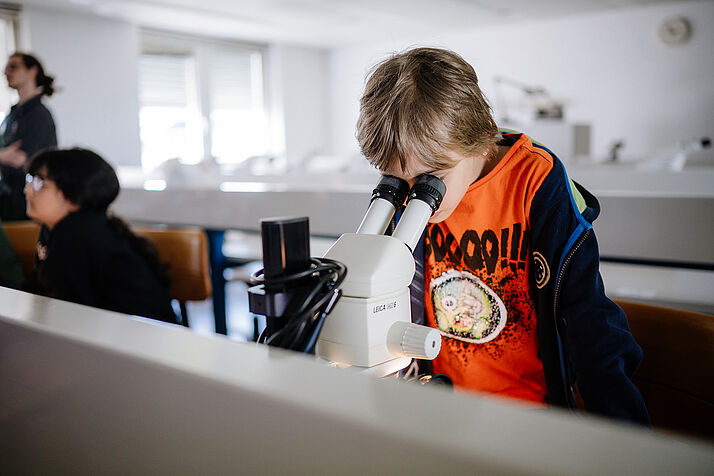Planet Earth Day 2025: Excitement and enthusiasm for young and old alike
02.05.2025

Scientists from the University of Vienna and EGU25 offered insights into their research fields. Photo: Walter Skokanitsch
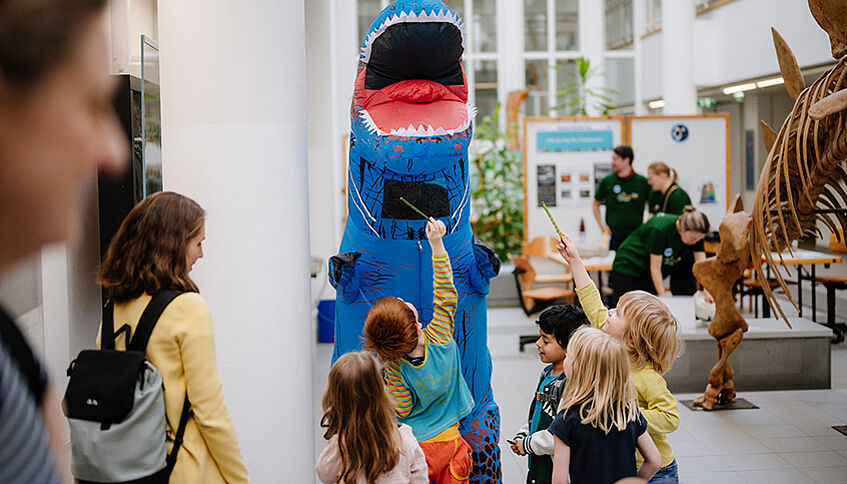
Children enthusiastically participated in the tours, workshops, and the "Marketplace of Science." Photo: Walter Skokanitsch
Around 400 visitors explored Earth science, climate and sustainability research and astronomy at the University of Vienna's first Planet Earth Day, celebrating our wonderful planet. They visited various stations at the "Marketplace of Science," where activities included sifting and identifying gemstones in a sandbox, making seed balls, generating earthquakes, examining microfossils under a microscope, and exploring Vienna's underground using VR headsets. Both children and parents participated with great enthusiasm and excitement.
On the Sunday following Earth Day, and to mark the start of EGU25 in Vienna—the largest geoscience conference in Europe, with around 20,000 participants—the Planet Earth Day took place at the University of Vienna's Geocenter. From 13:00 to 17:30, a"Marketplace of Science" offered opportunities to research, discuss, experience, play, and discover together.
At a total of 25 stations, around 400 visitors gained insights into various fields of earth sciences, climate and sustainability research, as well as astronomy. The marketplace was divided into four thematic areas: "The World Beneath Our Feet," "Ad Astra – To the Stars," "Past and Future," and "Our Wonderful Environment." In addition to numerous facilitators from the University of Vienna and the Children's Office, numerous scientists from EGU25 also hosted stations and workshops.
Four schools presented climate and sustainability projects in the form of posters and at a game table. Other sustainability initiatives, such as Scientists for Future, were also present.
From the Depths of the Earth to the Stars
"Past and Future" of our "Wonderful Environment"
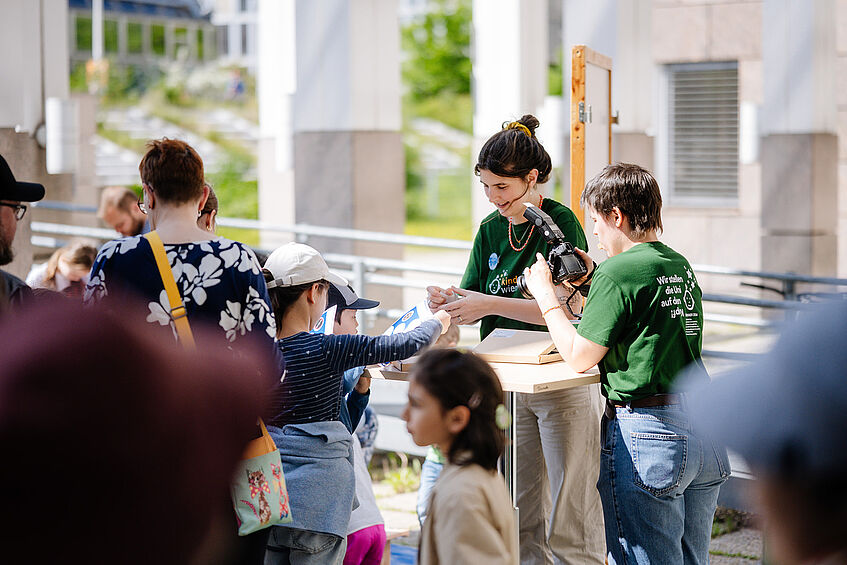
At the various stations, the children received stickers for their collection pass. Foto: Walter Skokanitsch
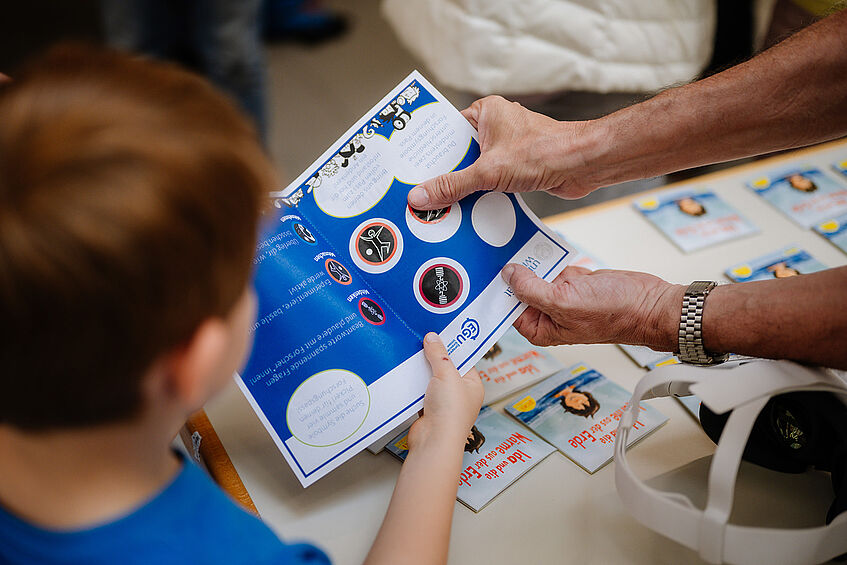
Anyone who handed in a completed collection pass received a small souvenir. Foto: Walter Skokanitsch
More than 220 children took part in the research rally across all these thematic areas: Those who handed in a completed collection pass received a small souvenir of Planet Earth Day, which included seed paper and shark teeth from the Eocene (33 to 56 million years ago).
Workshops and Tours: From Earth "X-Raying" to the Weather Measurement Garden
The workshops, which required prior registration, were also very popular: Over 200 interested participants attended one of the workshops – Microfossils in the Vienna Basin, Earth "X-Raying" beneath the ocean, "What Astronomy Can Teach Us," and the game "Reef Rescue - Save the Coral Reef!"
More than 250 people also participated in the guided tours – to the weather measurement garden, the "glowing stones," the mineral collection, and the dinosaur models – as well as in the demonstrations of the mobile planetarium.
A Walk with the Dinosaurs, Glowing Stones, and Rescued Coral Reefs
Interactively Designed Family Lectures
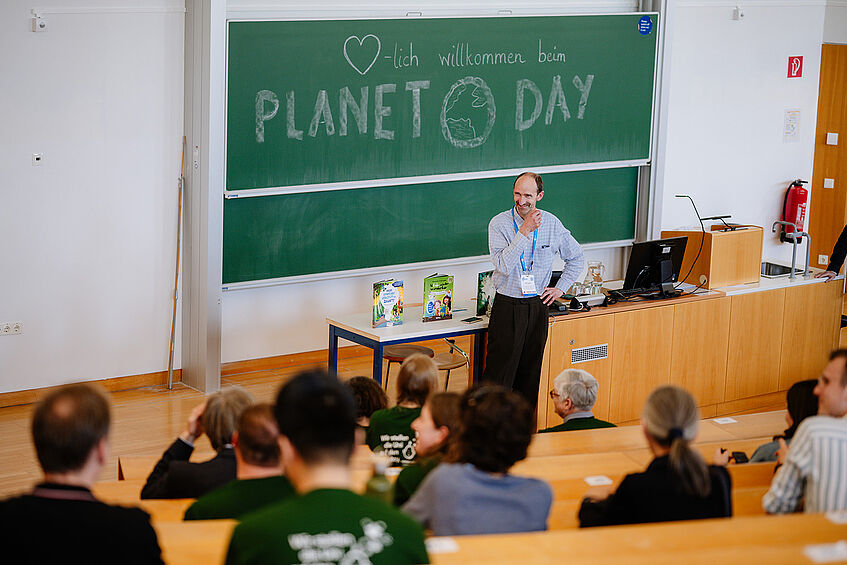
Phil Smith from the Educational Committee (in the picture) at the opening of the first family lecture. Photo: © Walter Skokanitsch
Interactively Designed Family Lectures
Two interactively designed family lectures were also offered: At 1:30 PM, geologist Michael Wagreich and children's author Melanie Laibl gave a talk on the topic "Making the Earth Wonderful Again: Strategies for the Anthropocene."
The first family lecture was opened by Nikolaus Hautsch, the Vice-Rector for Infrastructure at the University of Vienna, Rainer Abart (Dean of the Faculty of Earth Sciences, Geography, and Astronomy), as well as Phil Smith from the Educational Committee of the EGU and Karoline Iber from the Children's Office of the University of Vienna.
Peatlands as "Wonder Wizards"
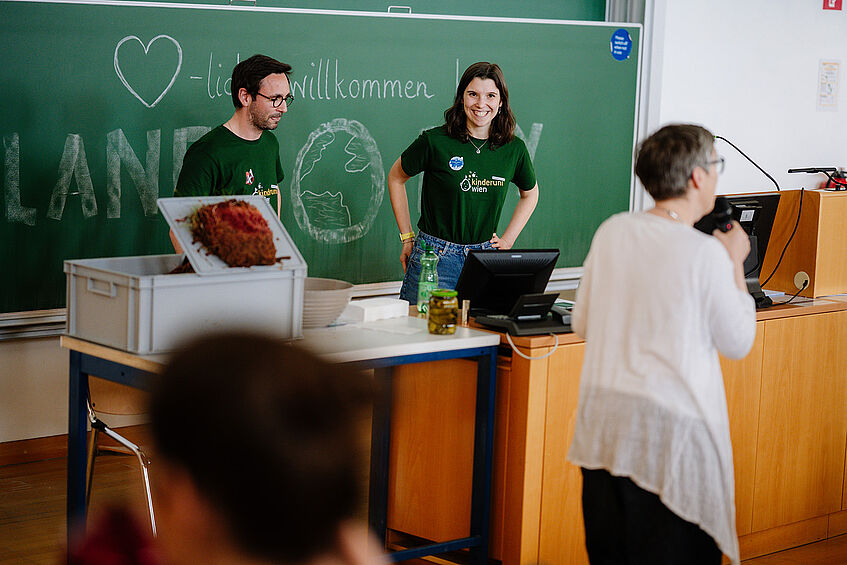
Raphael Müller and Barbara Lanthaler gave a lecture on the topic "Peatlands as Wonder Wizards." Photo: © Walter Skokanitsch
Peatlands as "Wonder Wizards"
At 16:15, Raphael Müller and master's student Barbara Lanthaler from the Geoecology research group of the Department of Geography and Regional Research held an interactive lecture on peatlands as wonder wizards for climate, water, and biodiversity. The lecture was opened by Stephan Glatzel (head of the Geoecology research group) and Karoline Iber from the Children's Office of the University of Vienna.
The children were able to touch a piece of "peat" and check how much water it stored. Additionally, there was a live connection to a measurement being taken in a bog.
The offered program generated a lot of interest, fun, and enthusiasm among children and parents, who highlighted the commitment and motivation of the entire team in numerous emails.
Bringing Sparkle to Children's Eyes
"This was made possible by the many contributors from the scientific and general staff, as well as the numerous students who all worked together to convey the various research areas in an engaging way," emphasizes Nils Bezwoda, who supported the organization as student assistant and coordinated the many helpers. "As students, you can gain a lot in terms of event organization and science communication," says Fiona Gašparac, student assistant at the Study Service Center of the faculty and a student of Earth Sciences, "but it was also a lot of fun to bring sparkle to so many children's eyes!"
A big thank you goes to all the facilitators and helpers, especially to the students who volunteered their time and efforts without pay, including Barbara Lanthaler, Patrick Etzler, Hannah Lüth, Claudia Klimpfinger, Jakob Brunner, Lina Rummler, Jean Estgen, Fabian Jagoutz, Magdalena Peham, Linus Altersberger, Alexander Penz, Kaloyan Vasev, Herwig Schuster, Xenia Hauser, David Fischer, and Anna Rupitsch. Special thanks also to the team at the Children's Office of the University of Vienna, particularly Thomas Troy and Waltraud Brauner, to Christina Orieschnig from the Early Career Committee of the EGU, and to Eva Spiegelhofer from the Vienna Anthropocene Network.
Special thanks also to the team at the Children's Office of the University of Vienna, particularly Thomas Troy and Waltraud Brauner, to Christina Orieschnig from the Early Career Committee der EGU, and to Eva Spiegelhofer from the Vienna Anthropocene Network.
The Planet Earth Day was organized by the Faculty of Earth Sciences, Geography, and Astronomy in cooperation with the Children's Office of the University of Vienna and the Educational and Outreach Committees of the European Geosciences Union (EGU).
The EGU General Assembly 2025 took place from April 27 to May 2, 2025, in Vienna; together with the Children's Office of the University of Vienna, Viennese school classes again had the opportunity to attend the largest Earth sciences conference in Europe, with more than 20,000 participants at the Austria Center Vienna.
Kooperationspartner Planet Earth Day
